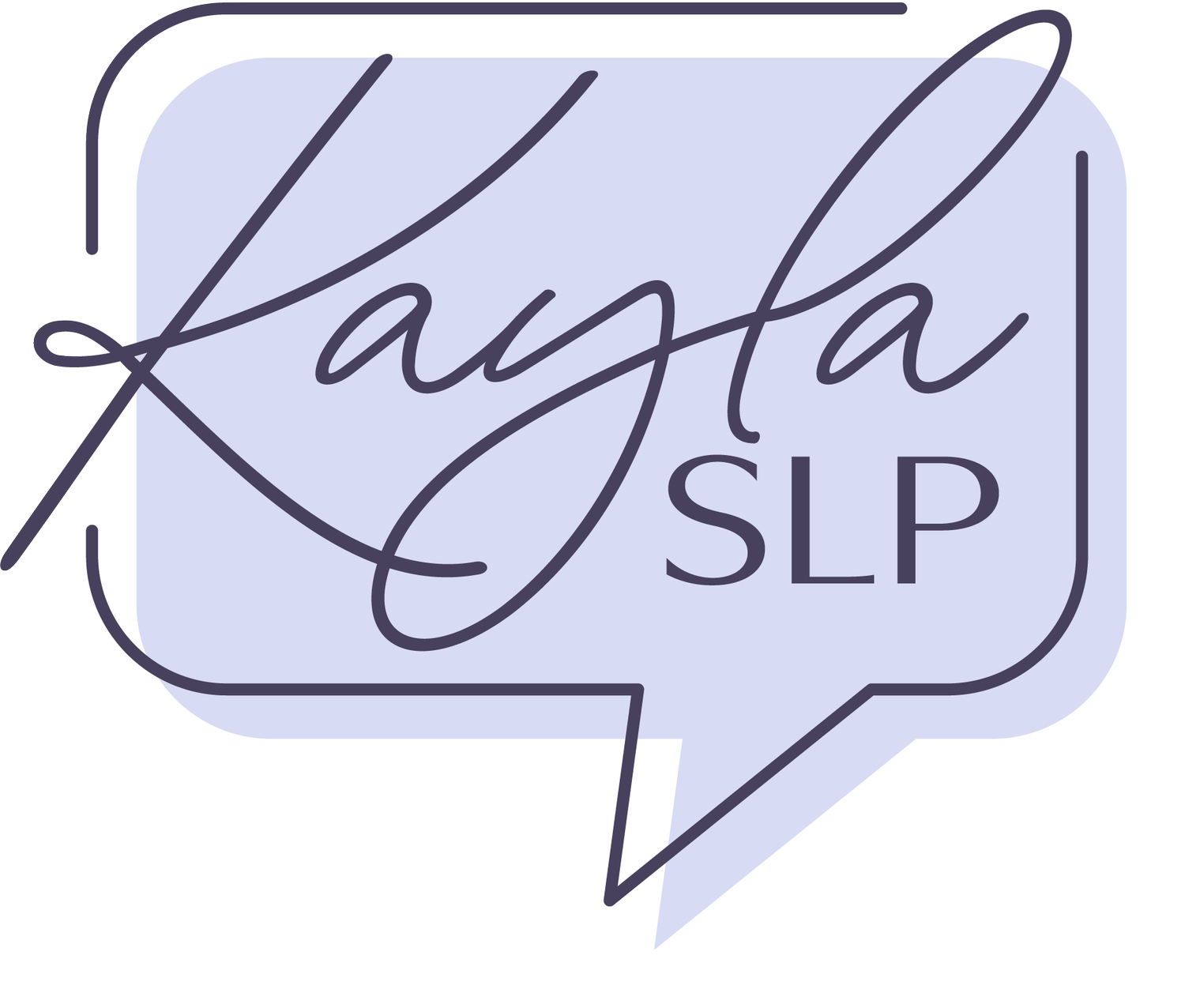SLP and OT: Fall Themed Therapy Ideas for Communication and Sensory Needs
*As an Amazon Associate, I earn from qualifying purchases.
Fall brings changing colors, crunchy leaves, pumpkins and sensory‑rich experiences. For children with communication and sensory needs, this season is a rich with therapy opportunities, if we plan with intention. When an SLP and OT collaborate around a fall theme, we support the whole child, helping them move, feel, play and communicate at the same time.
Why Are We Using Themes?
Themes like “apples,” “leaves,” “pumpkins,” “harvest” are relevant and motivating for kids, so engagement is high.
They naturally embed sensory experiences (textures of leaves/pumpkins, smells of fall, outdoor spaces) which OTs know boost regulation and readiness to learn.
These sensory‑rich experiences create meaningful contexts for language: describing textures, sequencing activities, commenting on action, making choices, etc.
Collaboration means you can plan tasks that are both communication‑rich and motor/sensory‑friendly, building cross‑discipline carryover and reducing duplicated planning.
Collaborative Fall-Themed Therapy Ideas
1. Leaf Rubbing & Sorting
Setup: Collect real fall leaves (or these re-usable alternatives). Provide crayons, paper, sorting trays.
OT focus: Fine motor skills (crayon grip, transferring leaves), bilateral coordination, sensory exploration of textures.
SLP focus: Vocabulary (rough/smooth, crunchy/soft, green/brown), descriptive language, comparative concepts (bigger/smaller), following 2‐step directions.
Ideas:
“Pick a big rough leaf and a small smooth leaf.”
Sort leaves by color/size and then describe “this one is bigger than that one.”
Use AAC or communication boards: “I want the brown one,” “It’s crunchy,” “Look at my leaf!”
2. Pumpkin Carving/Decorating for Motor & Language
Setup: Small pumpkins, safe carving tools or stickers for decorating, paint, sensory bins with pumpkin guts or seeds.
OT focus: Hand strength, tool use, bilateral coordination, sensory tolerance (for messy/“yucky” textures).
SLP focus: Verbs/actions (“carve,” “scooping,” “paint”), sequences (“first we cut, next we scoop, then we decorate”), express choice (“I want orange paint”), comments (“My pumpkin is big”).
Ideas:
Use a visual sequence board: “Cut → Scoop → Decorate → Show.”
Prompt communication: “What color will you paint?” “How does it feel inside?”
For AAC users: set up buttons for “Help,” “Stop,” “More,” “That’s fun,” etc.
3. Fall Scavenger / Movement Hunt
Setup: Indoor or outdoor space. Scatter objects such as pumpkins, leaves, acorns or small re-usable items like these mini autumn figures or fall scatter decor. Provide a basket or bag for collection. Use a checklist (check out my Fall Outdoor Scavenger Hunt resource!)with an accompanying clipboard.
OT focus: Gross motor (walking/running, bending, reaching, carrying basket), proprioceptive input (carrying a weighted bag), sensory input (different ground textures: leaves, grass, hay).
SLP focus: Following directions (“Find the red leaf under the bench”), requesting (“I want that one”), commenting on actions (“I’m carrying the bag”), answering WH‐questions (“Where did you find it?”).
Bonus Ideas:
Use a visual checklist with icons and words: leaf, acorn, small pumpkin, red item.
Ask: “Which one is heavier?” “How many items do you have?”
Incorporate breaks with a 30‑second freeze and prompt sentence: “I’m resting” or “My legs are tired.”
4. Sensory Bin: Fall Textures & Language
Setup: Large bin filled with beans, corn kernels, small pumpkins, gourds, leaves, acorns, pinecones. Provide scoops, cups, spoons. There are even pre-made sensory bins available online, or you can find other fillers here!
OT focus: Tactile exploration, fine motor( scooping, pouring ), sensory regulation (child chooses depth/pacing).
SLP focus: Vocabulary (pour, scoop, full/empty), comparisons (lighter/heavier, more/less), commenting & asking questions (“What is that? That’s a pinecone”), encourage elaboration.
Bonus Ideas:
Hide vocabulary or articulation targets in the bin: when the child finds one, they name it and say a sentence.
Use AAC for vocabulary and phrases such as: "I found!”, “Oh wow!”, “That’s cold!”, “All done!”
Introduce adjectives: cold/hot, rough/smooth, dry/damp.
Planning & Collaboration Tips for SLPs and OTs
Pre‑plan together: Decide on shared goals; e.g., OT aims child uses both hands to scoop, SLP aims child uses complete sentence during scoop (“I scoop the corn”).
Shared visuals and materials: Use one set of picture icons for both motor/sensory tasks and communication tasks.
Flexible pacing: Sensorily‐rich tasks can fatigue children, so plan built‑in breaks, movement resets (jump, stretch) before resuming language tasks.
Reflect & adapt: After each session, SLP & OT debrief: what worked, what taxed the child, how to adjust sensory load or language complexity next time.
Carryover to home/school: Provide caregivers/teachers with a simple “fall themed activity at home” idea and the target vocabulary/commands so the child gets repetition outside session.
Best Practices and Ensuring Success
Begin with sensory registration: before starting a language task, allow time for the child to feel, touch, explore. Without this, language demands may overwhelm.
Keep language embedded and functional: Use real materials and real actions, not just worksheets.
Use visual supports for sequencing and transitions, as they help children anticipate “what happens next.”
Celebrate all communication and movement successes: whether the child says one word, uses AAC, or hits a fine‐motor target.
Monitor fatigue: Both motor and communication tasks tire children. Observe signs of overload (sensory meltdown, avoidance, wandering) and be ready to shift to a calming task.
Now you know…
When an SLP and OT team up around fall‑themed sessions, you get a richer, more engaging therapy experience that meets children where they are: moving, sensing, and communicating.
Let this season be your canvas. Pull out the leaves, pumpkins and sensory bins and watch as your clients laugh, move and talk in new, meaningful ways.
Love this post?
Pin it for later!
Save this blog post to your favorite Pinterest board so you can come back to it anytime.


